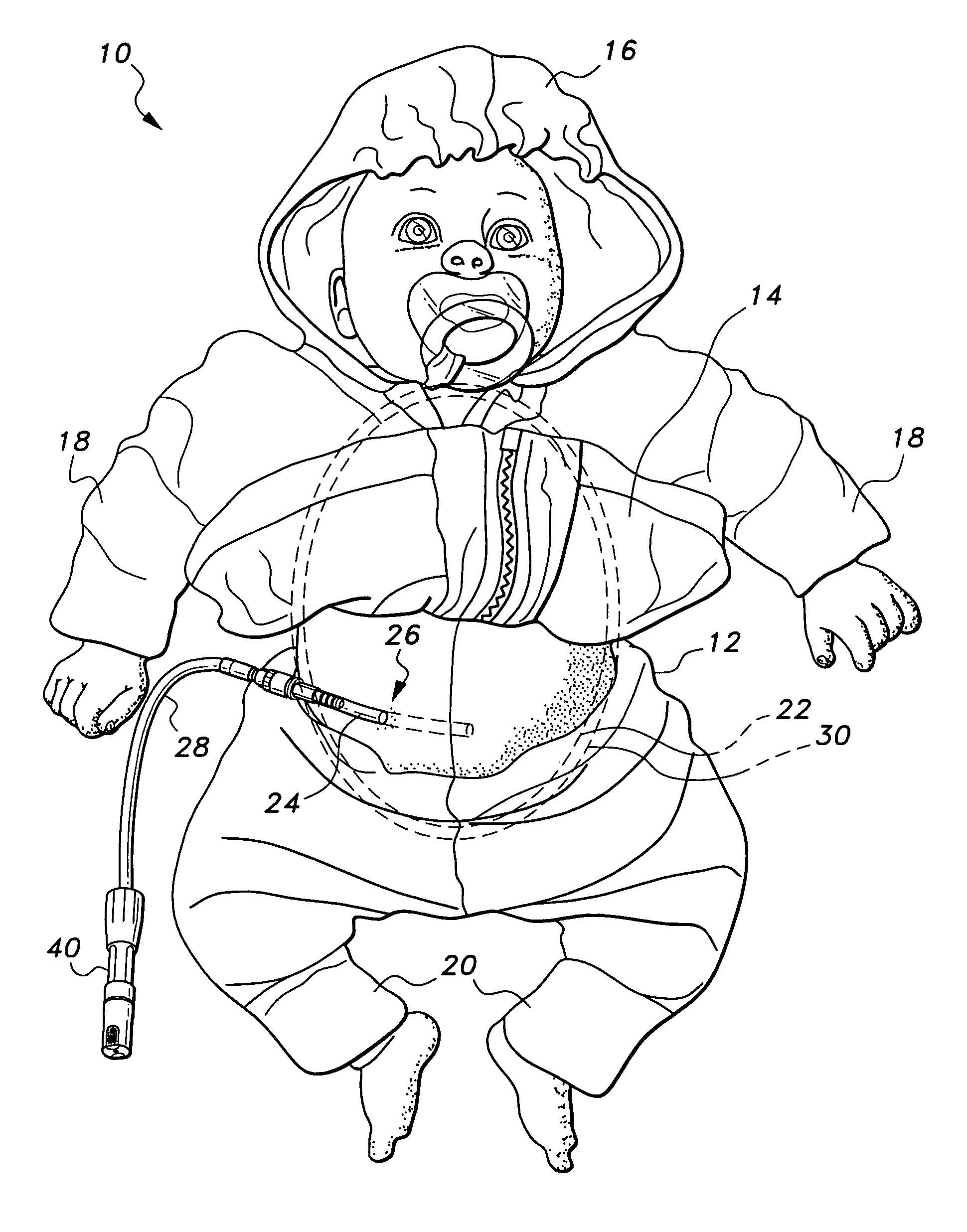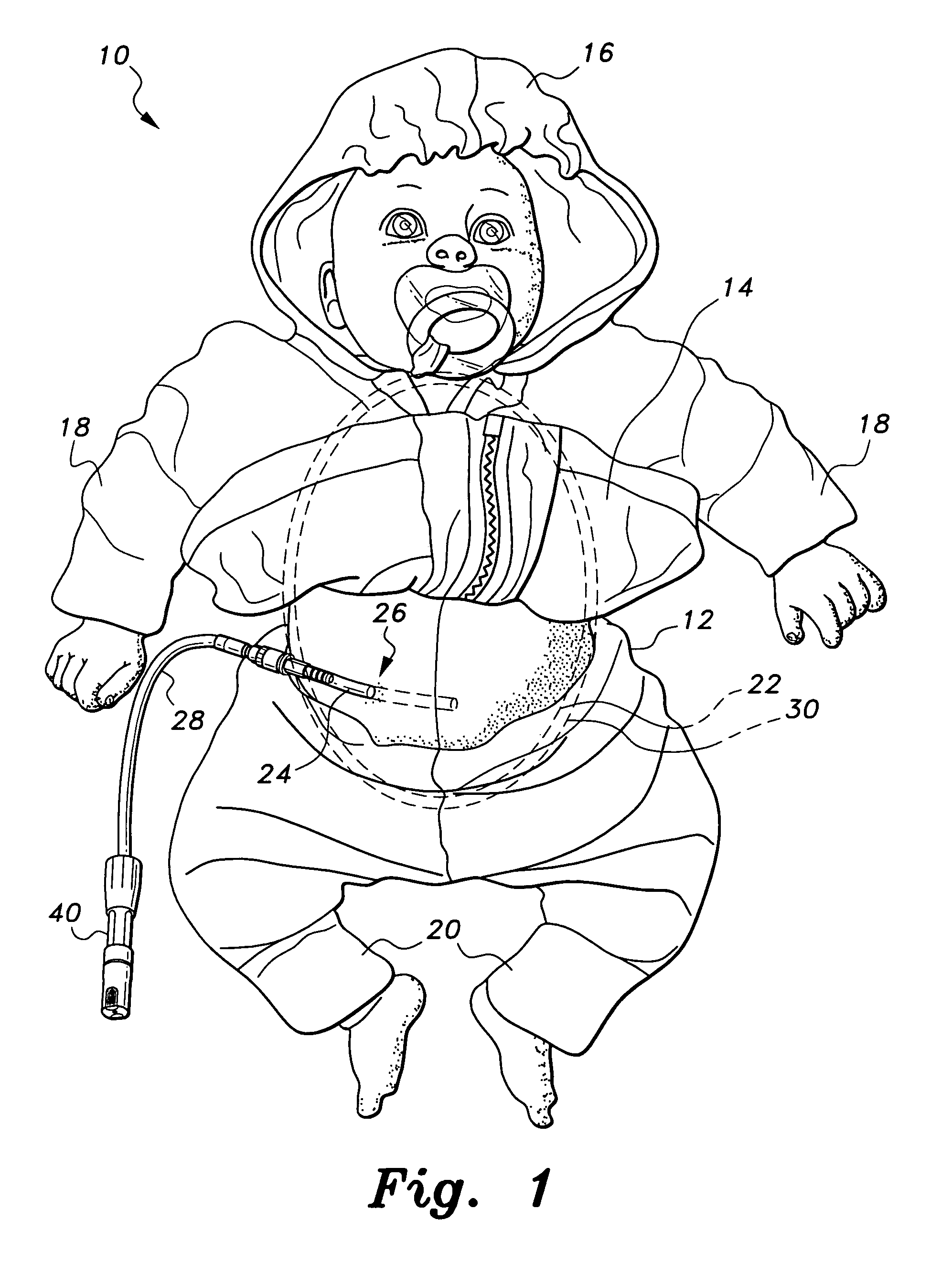Peritoneal dialysis doll
a dialysis and doll technology, applied in the field of medical mannequins, can solve the problems of inability to adequately address infection only through verbal or written instruction, difficulty in adequately addressing infection through oral or written instruction, and insufficient use of instructional materials
- Summary
- Abstract
- Description
- Claims
- Application Information
AI Technical Summary
Benefits of technology
Problems solved by technology
Method used
Image
Examples
Embodiment Construction
[0023] The present invention is a peritoneal dialysis doll to be used by patients or medical personnel to familiarize themselves with methods of performing peritoneal dialysis exchanges. The peritoneal dialysis doll, designated generally as 10 in the drawings, allows users to perform dialysis on the doll itself so that the users are able to understand the correct procedure for setting up exchanges of dialysis solution. The doll 10 resembles an infant in the Figures, however, it should be understood that doll 10 may be sized and shaped to resemble a human patient of any size, age, gender or race, depending upon the needs and desires of the user.
[0024] Referring first to FIG. 1, the peritoneal dialysis doll 10 is a training model that simulates a life-size human patient, providing dialysis trainees with a simulation of a human patient for purposes of practicing dialysis technique. The doll 10 includes a body portion 12 having at least a torso 14, but may additionally include a head 1...
PUM
 Login to View More
Login to View More Abstract
Description
Claims
Application Information
 Login to View More
Login to View More - R&D
- Intellectual Property
- Life Sciences
- Materials
- Tech Scout
- Unparalleled Data Quality
- Higher Quality Content
- 60% Fewer Hallucinations
Browse by: Latest US Patents, China's latest patents, Technical Efficacy Thesaurus, Application Domain, Technology Topic, Popular Technical Reports.
© 2025 PatSnap. All rights reserved.Legal|Privacy policy|Modern Slavery Act Transparency Statement|Sitemap|About US| Contact US: help@patsnap.com



